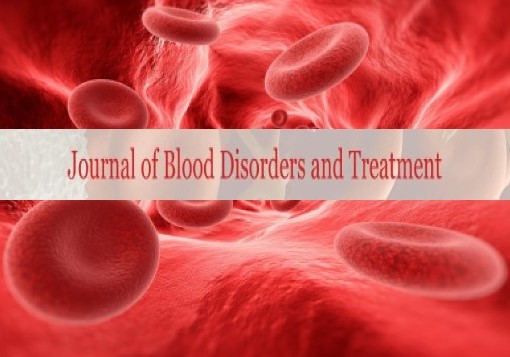Non-Hodgkin lymphomas
Received: 05-Jul-2022, Manuscript No. PULJBDT-22- 5958; Editor assigned: 07-Jul-2022, Pre QC No. PULJBDT-22- 5958 (PQ); Accepted Date: Jul 20, 2022; Reviewed: 14-Jul-2022 QC No. PULJBDT-22- 5958 (Q); Revised: 16-Jul-2022, Manuscript No. PULJBDT-22- 5958 (R); Published: 24-Jul-2022, DOI: 10.37532/puljbdt.2022.6(4).1-2
Citation: Collins A. Non-Hodgkin lymphomas. J Blood Disord Treat.2022; 6(4):1-2.
This open-access article is distributed under the terms of the Creative Commons Attribution Non-Commercial License (CC BY-NC) (http://creativecommons.org/licenses/by-nc/4.0/), which permits reuse, distribution and reproduction of the article, provided that the original work is properly cited and the reuse is restricted to noncommercial purposes. For commercial reuse, contact reprints@pulsus.com
Abstract
Non-Hodgkin Lymphoma (NHL) is a lymphoid tissue neoplasm that develops from B cell precursors, mature B cells, T cell precursors, and mature T cells. Non-Hodgkin lymphoma accounts for roughly 90% of all lymphomas, with Hodgkin lymphoma accounting for the remaining 10%.
Key Words
Non-Hodgkin; Lymphoma; Lymphoid
Introduction
Non-Hodgkin lymphoma is divided into subtypes, each with its own epidemiology, aetiology, immunophenotypic, genetic, clinical characteristics, and response to therapy. It can be divided into two groups, 'indolent' and 'aggressive' based on the prognosis of the disease.
Follicular lymphoma, Burkitt lymphoma, diffuse large B cell lymphoma, Mantle cell lymphoma, marginal zone lymphoma, and primary CNS lymphoma are the most common mature B cell neoplasms. Adult T cell lymphoma and Mycosis fungoides are the most common mature T cell lymphomas. The treatment of NHL varies greatly, depending on tumour stage, grade, and type of lymphoma, and various patient factors. Non-lymphoma Hodgkin's (NHL) presents with a wide range of histological and clinical features, making diagnosis difficult. The term "electronic commerce" refers to the sale of goods and services over the internet. The 12 minute video below gives a summary of the condition.
Non-Hodgkin Lymphomas (NHL) may be associated with various factors, including infections, environmental factors, immunodeficiency states, and chronic inflammation.
B-cell lymphomas account for roughly 85% of non-Hodgkin lymphomas in the US. T-cell lymphomas make up less than 15% of non-Hodgkin lymphomas in the US.
Mantle Cell Lymphoma accounts for approximately 7% of adult nonHodgkin lymphomas in the United States and Europe, with an annual incidence of 4 to 8 cases per million people. Incidence rises with age and appears to be on the rise in the United States. The average age at diagnosis is 68 years old. Non-Hodgkin lymphoma is the fifth most common paediatric cancer diagnosis in children under the age of 15, accounting for approximately 7% of all childhood cancers in the developed world.
Characteristics
Patients with fever, weight loss, or night sweats, also known as B symptoms, present. Systemic B symptoms are more common in patients with a high-grade variant of non-Hodgkin lymphoma.
Painless peripheral lymphadenopathy affects more than two-thirds of patients. Low-grade lymphoma can cause waxing and waning episodes of lymphadenopathy, as well as other symptoms. Einsteiner uploaded with.
Diagnosis And Tests
Your healthcare provider can assess your general health thanks to blood testing. Your blood may be tested by medical professionals for viruses connected to non-Hodgkin lymphoma as well as for other substances or traits that could be symptoms of a disease.
Lymph node biopsy
Medical professionals may take out all or part of a lymph node to look for Reed Sternberg cells in the tissue under a microscope.
Immunophenotyping
This test aids in identifying particular lymphoma subtypes. Based on the kinds of antigens or markers on the surface of the cells, antibodies are used to recognise cancer cells. (Antibodies are made by the body to defend against foreign toxins. Antigens are things that make your immune system react.)
In order to help with the planning of Hodgkin lymphoma treatment, healthcare professionals may perform tests for the indicators of hepatitis B and C. Antibodies and/or viral-specific antigens are markers. If you have been exposed to these viruses, various markers or combinations of markers will reflect this. HIV testing may be done by healthcare professionals to aid with treatment planning.
Stages Of Non-Hodgkin Lymphomas
Test results aid medical professionals in cancer staging. To create treatment strategies and determine prognosis, or predicted results, healthcare providers stage cancer. The stages of nonHodgkin lymphoma are described here.
Stage 1
One lymph node region or one lymphoid organ has lymphoma. Lymphoid organs include your thymus, spleen, and bone marrow. Lymphoma has spread outside of your lymphatic system to just one location of a single organ.
Stage 2
Two or more sets of lymph nodes on the same side (above or below) of your diaphragm have lymphoma. Your chest and belly are divided by this muscle band.
The lymphoma is located in one location of a nearby organ and is a part of a collection of lymph nodes. Other lymph nodes close to your diaphragm may also be affected at this point by the lymphoma.
Stage 3
Diaphragm's lymph node regions on either side—above and below— have lymphoma.
Stage 4
At least one organ outside of your lymphatic system, such as your bone marrow, liver, or lung, has lymphoma.





